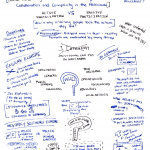My second day at the Belfer Conference got off to an exciting start as we had exclusive time in the museum book shop prior to our first session. As you might imagine from reading this blog, I am an avid reader and each year students that I have the privilege of working with are a part of our “Culture of Readers”. My exclusive time in the book store was sweeten even more as I was given a $50 gift card for being part of the Belfer conference. With so many books to choose from my colleagues and I pulled our money together to purchase a plethora of resources for our students – thank goodness they offer shipping at the bookstore, otherwise I might have had to purchase a second suitcase… although this wouldn’t have been the first time that has happened on a trip!
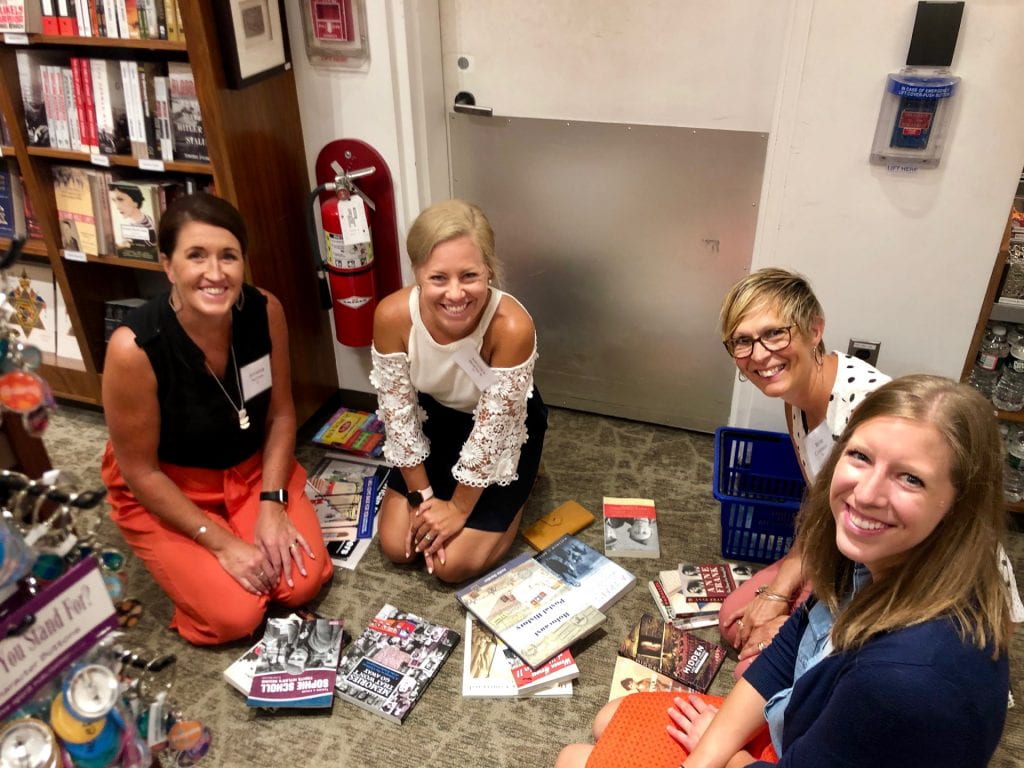
After closing down the museum book shop, I headed back to the Rubinstein Auditorium for our opening session with the Program Coordinator of Education Initiatives, Kim Blevins-Relleva, who shared essential framing questions to guide our thinking prior to entering the second and third floors of the Museum’s permanent exhibition. We were again allowed early entrance to the permanent exhibit and with over two hours of exploration time I had so much to learn from. The third floor of the Museum takes a deeper look at the evolution of Nazi policy towards the Jewish people. This floor follows the movement of Jews from ghettos to mass extermination camps.

The third floor of the museum includes a wide variety of information and resources, however one particular part that resonated with me was as we entered into the ghettos section of the museum. In this area, visitors learn first about the establishment of the ghettos throughout Europe and then how these ghettos served as the staging grounds for Jewish extermination. Mr. Marcus my facilitator from the previous day asked everyone to look down. I immediately noticed that I was standing on cobblestones. He explained that the cobblestones covering this area originally came from Chlodna Street, which was located in the Warsaw ghetto. Farther down this street was off limits to Jews, who had to cross over it using a wooden foot bridge. The image of this bridge crossing is in many books and took up an entire wall in the museum.


After moving through the dark and eerie museum train car I moved to the concentration camp section of the exhibit. Mr. Marcus invited those who were interested to walk over to view an expanded photo showing the arrival of individuals in Auschwitz. Within this photo you can clearly see how men and women were separated into two different lines to determine who would live and who would die. Mr. Marcus stated, “almost all pictures have observers in the background, if you look closely you can see why this photo was purposefully chosen by the museum to be displayed”. He went on to explain that in the bottom left corner of the photograph is Irene Wiess, unaware that she was being photographed, Irene was panicking has she had just been separated from her sister.. Unbeknownst to her, she would be reunited with her sister Serena, however, her other siblings who were too young to work were sent immediately to the gas chambers. After going through the initial entry process, Irene asked the other prisoners, “when we would see our families … A woman pointed to the chimney and said ‘Do you see the smoke? There is your family.’” As Mr. Marcus shared Irene’s story my heart dropped as I cannot imagine arriving at a place such as Auschwitz or to be separated from my sister. I can only begin to imagine how the feeling of panic and sadness must have taken its toll on Irene. Hearing this story from Mr. Marcus humanized the individuals within this photograph and I plan to use this same photo with my students.
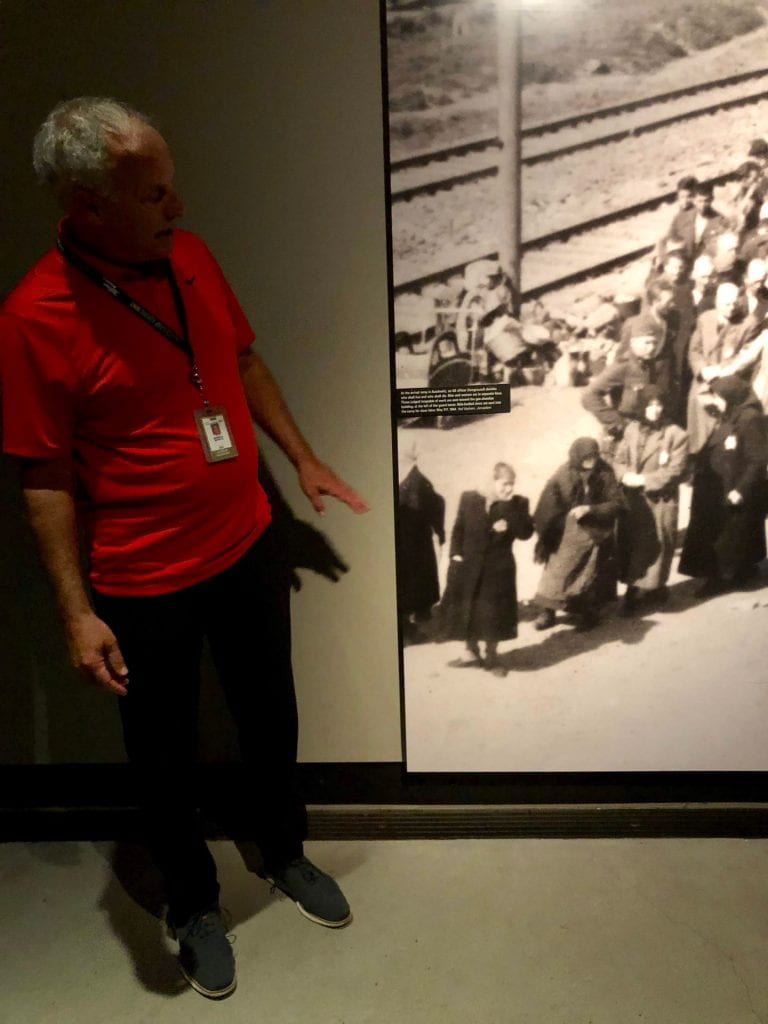
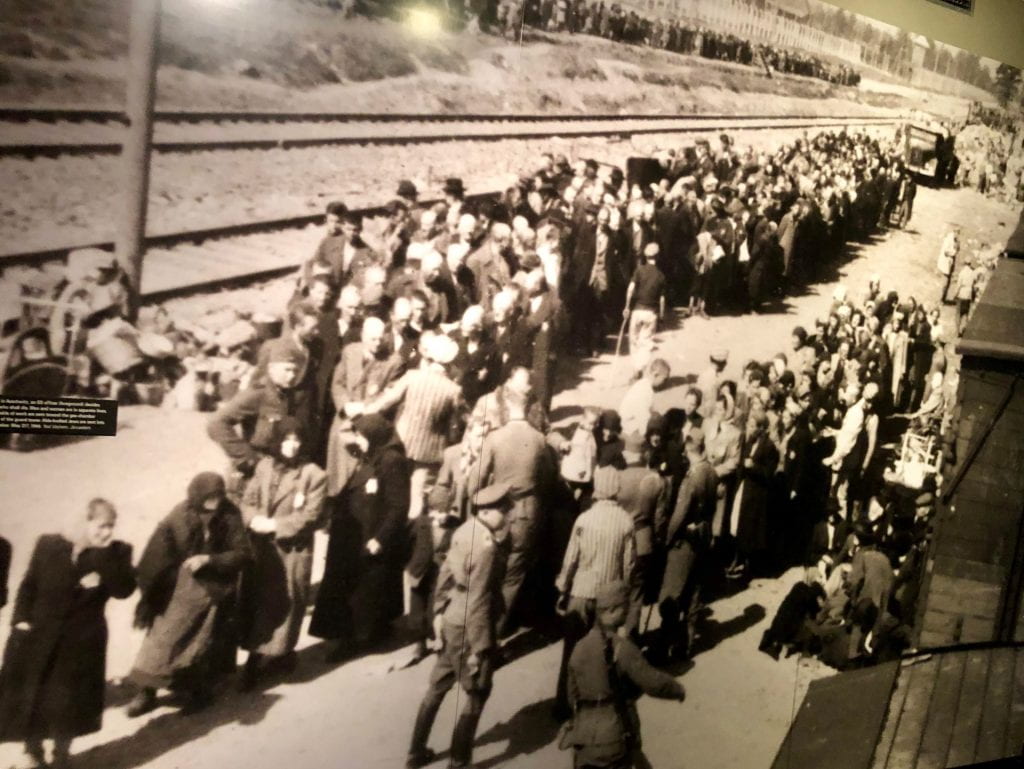
After learning about why Auschwitze was not bombed by looking at aerial photos of the camp we then transitioned to the second floor, first by walking through the shoe exhibit. It is absolutely startling when first walking into this room as the amount of shoes are incredibly immense. This specific section of the exhibit is designed to teach visitors how the “Final Solution” generated thousands of freight carloads of stolen goods, such as clothing and shoes. Many of these shoes were taken from prisoners who needed shoes to survive the unbearable European winters and were instead given to German citizens who had been relocated into sections of Poland.

I then moved to the second floor, which shares the stories of liberation of the Nazi camps. This floor also highlights stories of resistance and the aftermath of the Holocaust. It was in this section of the exhibit that I was able to see one of the Danish rescue boats used to help Jews escape across a narrow straight to the Swedish coast.
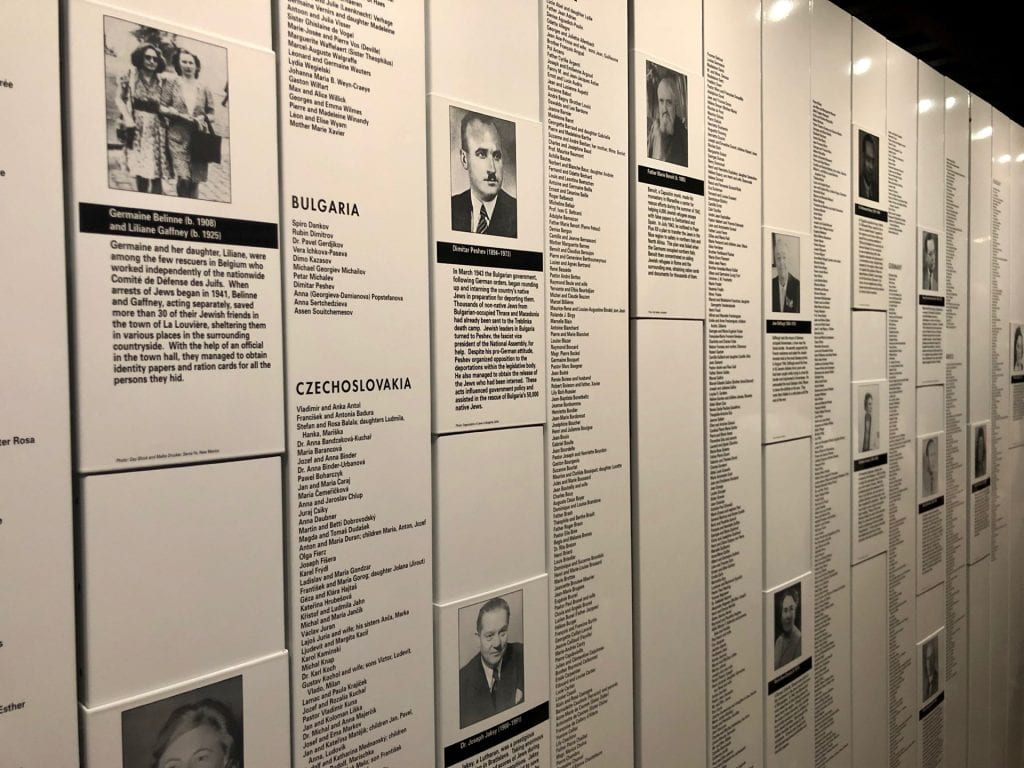
Another fascinating element was the wall of rescuers. The wall has the names of more than 10,000 individuals who were honored by Yad Vashem for the acts of ordinary decency towards friends, neighbors and strangers which in turn saved the lives of those who might otherwise have died under Nazi persecution.


As I walked towards the very end of the exhibit I noticed many of my fellow teachers sitting in the exhibition theater watching video testimonies of Holocaust survivors. As I walked closer I noticed a familiar face come across the screen, that of Gerta Weissman Klein, a holocaust survivor who’s story I share with my students each year. One of the unique features of this video was that it showed not only clips of Gerta, but also of her husband. The clips of her husband I had never seen before. Each year as I share Gerta’s story with my students, I always feel as though my heart skips a beat, especially when Gerta explains how the American soldier who liberator and restored her back to humanity, by opening a door for her and asking her to “show him the other ladies” eventually became her husband. See the link below to follow Gerta’s entire story, it is heartbreaking, inspiring and uplifting.

After leaving the second floor permanent exhibit I entered into the Hall of Remembrance. This Hall is inscribed with the names of some of the major killing sites and serves as a US memorial to the victims of the Holocaust. Guests are invited to light a candle or observe a moment of silence in memory of these victims. Even though the Hall was quite crowded by this time a low murmur of voices could barely be heard. It was powerful to see so many individuals from around the country, possibly the world take a moment to remember the victims of the Holocaust.
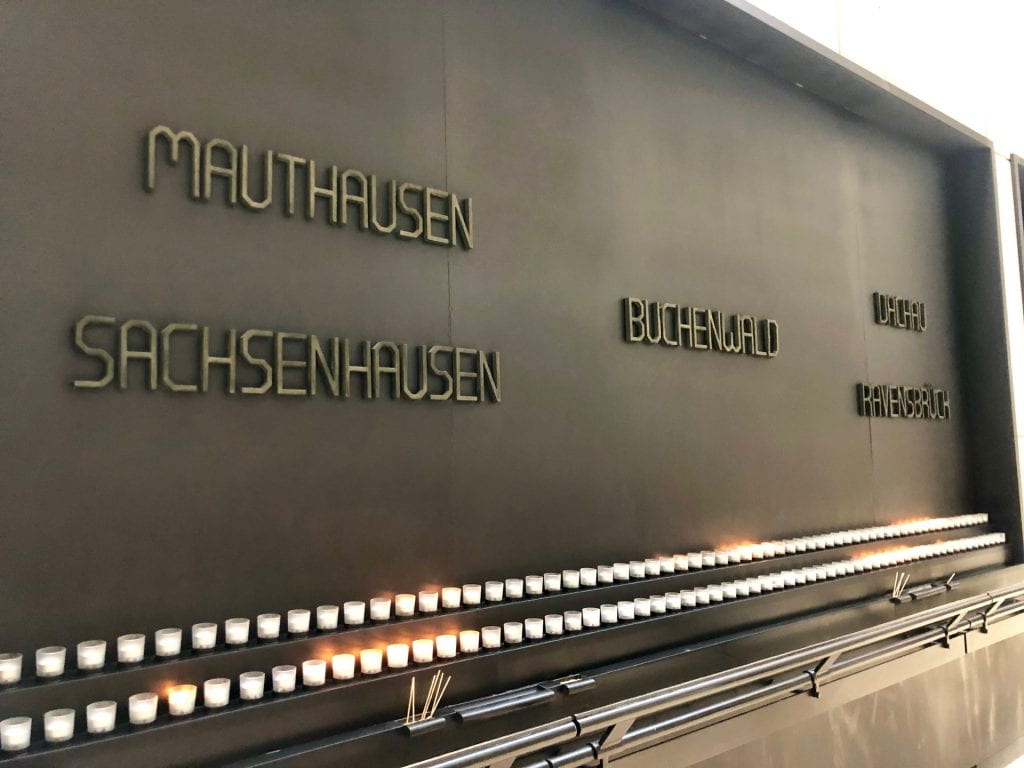
Throughout lunch that day I found myself collaborating and sharing ideas with teachers from Texas, Oklahoma, and Tennessee. Hearing what they took away from the exhibits, as well as bouncing ideas off of one another is one of my favorite parts of attending these types of teacher conferences! After lunch we had a variety of break out sessions including a session on “Some Were Our Neighbors” an online exhibit, which was formerly housed in the Museum. I’ve used the online exhibit for years with my students because it really helps to humanize the victims of the Holocaust, as well as demonstrates that even the smallest acts of hate can have a major impact on a person’s life. Students connect with the stories within this exhibit because they view photos of kids playing in the streets, just like they do, they see classrooms full of students, similar to their own classrooms and they learn about neighbors just like their own, but what students don’t realize prior to exploring this exhibit is how Hilter and other Nazi leaders depended on ordinary people around Europe to become perpetrators of the Holocaust in order for the Nazi regime to committ the crime of genocide.
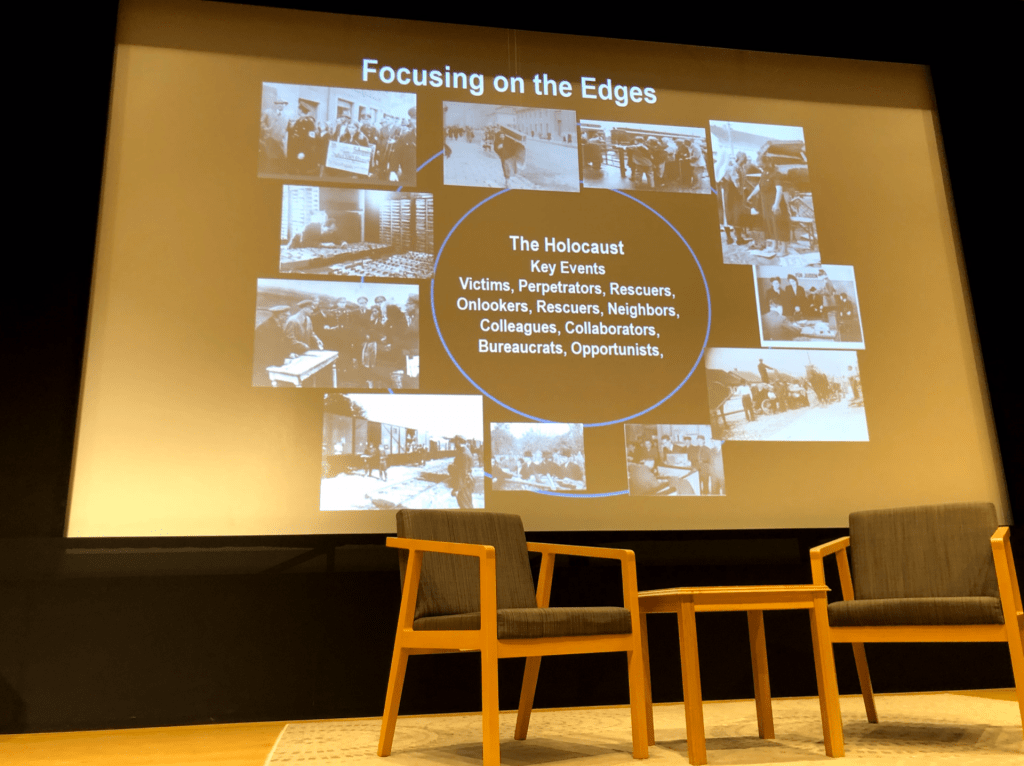
In her lecture, JoAnna Wasserman, the Education Initatives Manager for the Museum explained that when most students are asked, “who is responsible for the Holocaust” the majority will say “Hitler”. However, Hitler never killed a Jewish person with his own hands, rather, he depended on the thousands of ordinary people who actively collaborated with the Nazi’s. Terms I found of particular interest that Ms Wasserman elaborated on were “active participation vs. passive participation”. A major misconception in regards to the Holocaust that she shared was everyone was in fear, when in reality humans are moitvated my many things and many individuals who chose collaboration or complicity were motivated by the opportunities surrounding those specific actions.
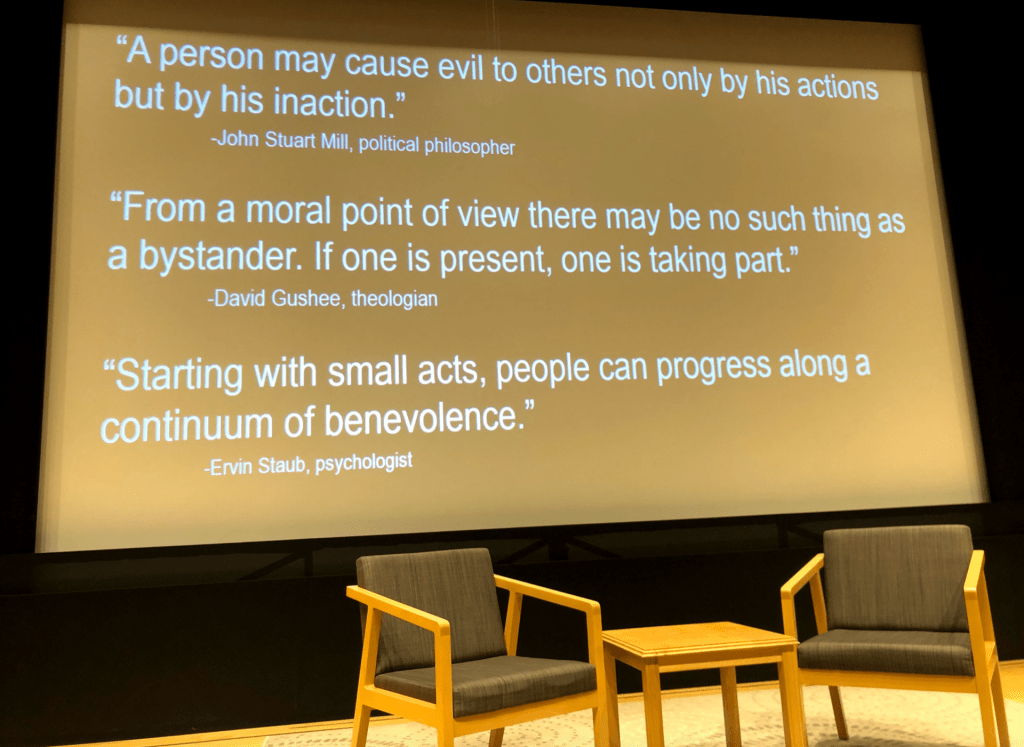
Ms. Wasserman also emphasized that individuals can fit into many areas in regards to the Holocaust and that this is an important topic to discuss with students. A person could be a neighbor, but they could also be a leader, a public servant, an onlooker, a true believer, an opportunist, a conformist, a resistor or a local recruit. People don’t fit into a box and that saying stands true when evaluating those involved with the Holocaust. Ms. Wasserman shared a variety of examples that I look forward to bringing back to my own students when I use the “Some Were Our Neighbors” online exhibit. One such example was that Jews were forbidden from reading newspapers, many German citizens were not enthusiastic about the program, but no one did anything about it. We also learned how many community initiatives against Jewish people were not always forced by soldiers and this led to the question of, what message does this send to the community, specifically those within the community being targeted. Throughout her lecture, the question of what happens when we follow the chain of command without asking questions, continued to surface. This question will be one that I continue to reflect on during my time at the Museum and as I travel back to Iowa.
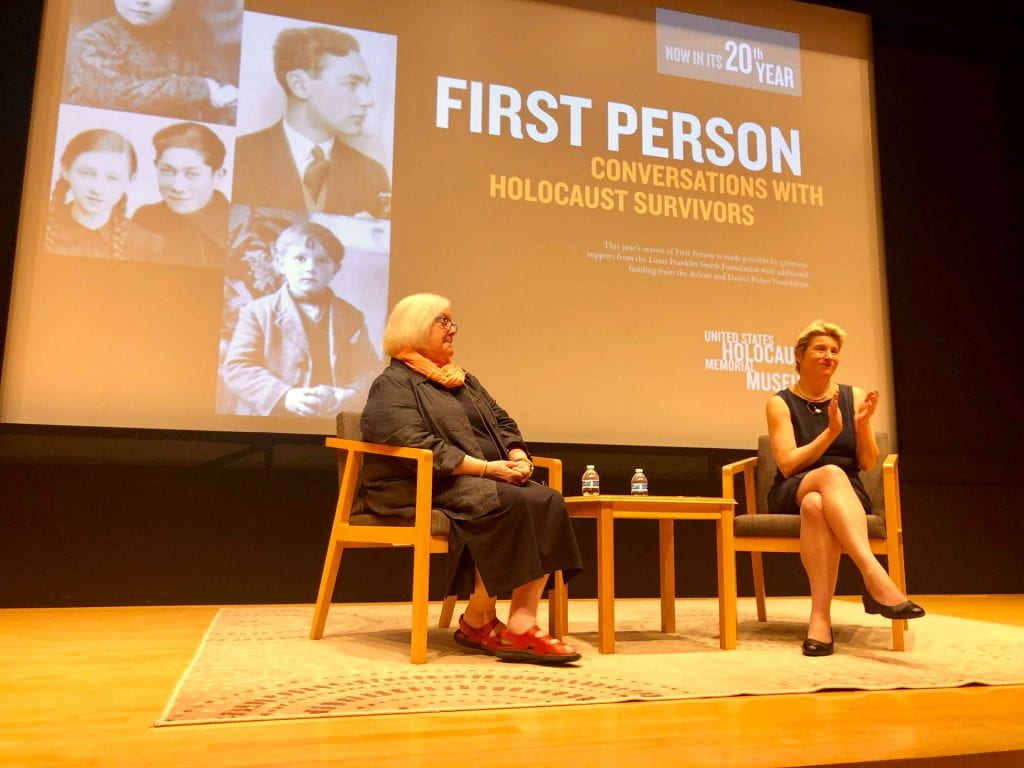
This afternoon I was also able to be an audience member of a First Person interview. This is perhaps the experience I have most looked forward to after finding out I would be attending this conference. Each spring, for the past four years, my students have watched the First Person Interviews via the Museum’s livestream account. Prior to each livestream, my students read the biography of the individual who will be interviewed and create a life timeline of the person via Google Tour Creator. During each interview, the only sound you can hear in my classroom is that of students writing questions they would like me to tweet out to the museum. Each year, I find myself just as excited as my students to listen and learn from these survivors. Their unique stories holds a special place in my heart and today I was able to listen to a survivor in person – this is a true bucket list item of mine.
The First Person I had the opportunity to listen to today was Louise Lawrence-Israels. Born in the Netherlands, at only six months old Louise went into hiding with her family for over two years in an attic. Louis began her story by describing life before the war. She said that the Netherlands didn’t participate in WWI and therefore believed that they would not be involved in WWII. Her parents along with many others did not consider Germany as a serious threat and instead considered Germany to be a friend. When the Nazi’s invaded Holland in 1940, her father was pulled as reserve member of the Army and was eventually taken as a POW. Quickly after Nazi occupation began regulation became the norm. In fact, Louise said “with each regulation our lives became smaller”. Knowing their options were limited if they stayed in their town her family received orders to move to Amsterdam. Her father knew that moving to the designated area would mean sure death as Jews were being rounded up each day and sent away. “Everything is luck if you survive” Louise said. “You didn’t know who you could trust.” However, her father did trust one man, a former friend in the army who was able to get them into hiding. Louise’s father found a house by the park, where each floor had its own walk up – this was key, as you never had to see your neighbors. Knowing time was limited, her father gathered mattresses, oil lamps, blankets, warm clothes, utensils, pots and pans.

As a method of protection her parents changed her name in case they were ever questioned “I didn’t know my real name till I was liberated”. Throughout their time in hiding Louis said she truly didn’t know the danger they faced every day as her parents never talked about the outside world. “What you don’t know you don’t miss” she said. Even though she wasn’t aware of what was outside the attic she shared that the winter of 1944-1945, also known as the hunger winter, was especially tough. Not only was there no electric, but no supplies, the Nazi’s had even cut down all of the surrounding trees for firewood. When she was finally liberated by the Canadian soldiers her parents took Louise and her brother out of the attic for the first time in two and a half years. “The sun blinded us” she exclaimed. “My brother and I decided the outside never ended and this immediately frightened us”. It was only when a Canadian soldier gave them part of a Hershey bar that they decided they would be willing to go outside again. Louise eventually moved to Sweden and finally to the United States. Here she learned that her family had hidden only five blocks from Anne Frank’s family. As an adult, Louise shared that she really struggled with the idea of hate and when her daughter began to repeat the way Louise talked she stated “I came to realize you cannot go through life teaching your children hatred.” As is tradition with the First Person interviews, they are given the last word. Louise’s ending message was guided by the idea of standing up for what is right, “We cannot be silent… it’s important that everybody speaks up.”
Our afternoon ended with learning how to bring the voices of survivors to my students. I learned one of the key elements of bringing survivor testimony into my classroom is to highlight the diversity of experiences. Exposing students to the various stories of the Holocaust, survivors of death camps, survivors of concentration camps and survivors due to being hidden are all important elements to incorporate into my classroom to provide students with the whole story of the Holocaust. This will be an element I continue to work on as I refocus how I teach the Holocaust and I look forward to discussing this more with my wonderful grade level team. Tomorrow will be my last day of the conference and I am looking forward to what the museum has in store!
Irene Wiess’ Biography: https://www.ushmm.org/remember/holocaust-survivors/volunteers/irene-fogel-weiss
Story of Gerta Weissman: https://www.ushmm.org/exhibition/personal-history/media_oi.php?MediaId=1134&th=liberation
First Person Biography of Louise Lawrence-Israëls: https://www.ushmm.org/remember/holocaust-survivors/volunteers/louise-lawrence-israels
Some Were Our Neighbors Online Exhibit: http://somewereneighbors.ushmm.org

